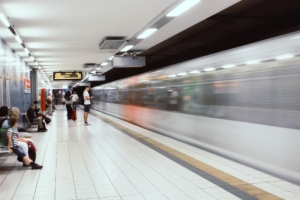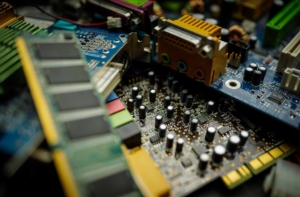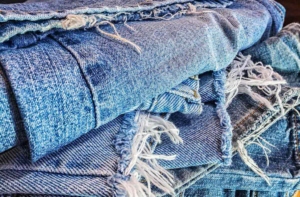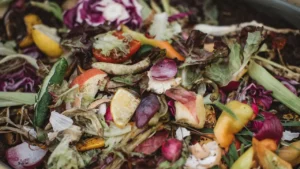What is E-Waste and How to Manage it: Tips for E-Waste Recycling
E-waste, also known as electronic waste, refers to discarded or broken electronic devices like computers, smartphones, televisions, and other household appliances. With the rapid advancements in technology, e-waste is becoming an increasingly significant problem. Consider these statistics, for example:
- The amount of global e-waste generated in 2019 was 53.6 million metric tons, up 21% from 2014 (UNU).
- Only 17% of e-waste was formally recycled in 2019 (UNU).
- In 2019 the average American generated 16.9 pounds of e-waste (EPA).
- In 2021, it is estimated that the global e-waste market will reach 55.8 million metric tons (Global Market Insights).
Electronic Waste’s Impact on the Environment
E-waste is a major source of environmental pollution. Old electronic products contain hazardous materials that can leach into the soil and water if not disposed of properly. This can lead to serious health risks for both people and wildlife.
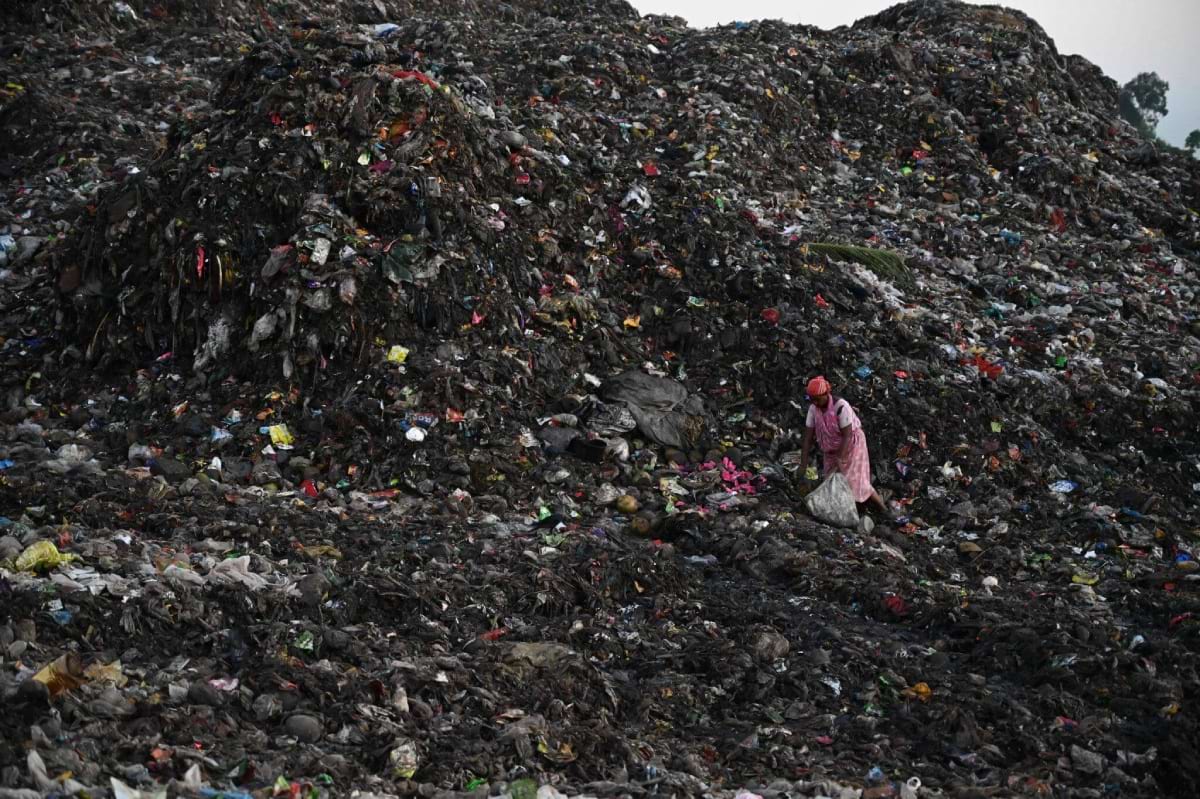
Additionally, electronic waste contains valuable raw materials like copper, gold, silver, and precious metals that could be recycled rather than thrown away.
When these materials are landfilled, they’re wasted instead of reused or recovered.
To reduce e-waste’s environmental impact, we need to take steps to manage it properly.
According to the Environmental Protection Agency (EPA), the most effective way to reduce electronic waste is to prevent it in the first place.
This can be done by purchasing new products with reduced packaging and fewer toxic materials, repurposing old electronics for use in other applications, or simply prolonging the life of our current devices.
In addition, businesses and individuals should make sure they’re disposing of their e-waste responsibly by recycling as much material as possible.
Many municipalities offer special collection days where you can bring your old electronics to be recycled and reused instead of throwing them away.
E-Waste and Climate Change
E-waste has a direct impact on climate change as well. When electronics are not disposed of properly, they may end up in landfills where their hazardous materials can leach into the soil and water.

This contributes to water pollution, air pollution, and other forms of environmental damage that contribute to global warming.
There are several environmental issues that come from not recycling your e-waste:
- Soil Pollution: Electronic waste contains hazardous chemicals that can leach into the soil and water when not disposed of properly.
- Air Pollution: Burning electronics releases toxic pollutants into the air, contributing to climate change.
- Water Pollution: Leached materials from e-waste have the potential to contaminate local drinking water sources and create health risks for people or wildlife who come in contact with it.
In addition, recycling e-waste helps reduce greenhouse gas emissions by preventing the need for new materials to be produced from scratch.
By recycling old electronics instead of throwing them away, we’re helping to create a circular economy where resources are reused repeatedly instead of being lost forever.
This helps reduce our reliance on virgin materials while decreasing emissions associated with production and shipping.
The Increasing Importance of E-Waste Recycling
Let’s take a look at some reasons why e-waste recycling is becoming more relevant than ever before:
- It helps conserve natural resources. Electronic devices are often made from valuable materials like gold, silver, and copper, which are finite resources. By recycling e-waste, we can recover these materials and reuse them in the production of new devices. This not only helps to conserve our natural resources but also reduces the need to extract new materials, thereby reducing the environmental impact.
- It helps prevent pollution. Electronic devices contain toxic substances such as lead, cadmium, and mercury, which can cause harm to the environment and human health if not properly disposed of. When electronic waste is sent to a landfill, these toxic substances can leach into the soil and groundwater, contaminating our environment. However, when e-waste is recycled, these toxic substances are safely removed and disposed of, helping to protect our planet.
- It helps create jobs and stimulate the economy. The process of recycling e-waste requires specialized skills and equipment, creating jobs in the recycling industry. This creates employment opportunities and helps stimulate economic growth by creating new industries and businesses.
- There’s more electronic waste being produced than ever. With the rapid advancements in technology and the increasing number of electronic devices being used, the amount of e-waste being generated is growing at an alarming rate. This means that if we don’t take action to recycle e-waste, the environmental and health impacts will only become worse over time.

This is a question that many people are asking these days. E-waste includes anything with a battery or a cord – from old cell phones to TVs and computers. In fact, the average American household has 24 electronic devices!
Millions of tonnes of e-waste are produced each year from developed and developing countries. This waste is an increasing environmental issue.
E-waste management can be difficult, but there are some things you can do to reduce the amount of electronic waste you produce.
This article will explore electronic waste and how best to reduce it.
Lack of Recycling Facilities
One of the biggest challenges in managing e-waste is that there are often insufficient facilities for recycling and properly disposing of electronics. Many countries lack proper regulations and resources to ensure responsible waste disposal.
In addition, many people don’t realize they can take their old devices to a local collection site or recycle them through a certified program.
This means that millions of tonnes of e-waste end up in landfills or burned yearly, leading to further environmental damage.
How to Properly Dispose of E-Waste
E-waste contains harmful materials for the environment and human health. These materials include heavy metals like lead, cadmium, and mercury, and toxic chemicals like brominated flame retardants and polyvinyl chloride (PVC).
When we discard electronics in landfills, these toxic materials can leach into the soil and groundwater, contaminating the environment and potentially harming local ecosystems and communities. Not to mention, burning hazardous waste in landfills releases toxic fumes into the air, which can contribute to air pollution and cause people to have respiratory health problems.
This is why it’s so important to properly dispose of electronics through e-waste recycling programs to reduce the harm to the environment and human health. These programs can safely extract and dispose of toxic metals and recycle precious materials from the electronics for reuse.
How to Reduce Your Electronic Waste?
When it comes to reducing e-waste, you can take a few simple steps. However, you must also be aware of policies and regulations in your area before disposing of any electronics.
Sell or Donate Working Electronics
If your device is still in good working condition, you can sell it or donate it to someone who can use it. There are many websites that allow you to list and sell used electronics. You can also donate them to charities or local organizations if they’re still usable.

Cell phones and computers are the most common type of e-waste. In fact, most e-waste still works when it is disposed!
Businesses that upgrade every year with new systems and hardware can have a huge environmental impact. Donating computers to charitable organizations or schools is an excellent way to minimize this waste, as well as help those in need at the same time.
Follow the 3 R’s
The 3 R’s – reduce, reuse, and recycle – are the best way to manage e-waste.
- Reduce: Whenever possible, try to use fewer electronics. This means using energy-efficient products and only buying what you need.
- Reuse: Instead of throwing away old devices, try to repurpose them for other uses or find someone who can use them.
- Recycle: When it comes time to get rid of an electronic device, make sure to recycle properly. Make sure you check with local authorities on how to do this, as there may be specific regulations in your area.
Consuming less and recycling more can help greatly reduce our e-waste problem and protect the environment for generations to come.
Organize your electronics
Organizing your electronics can help reduce e-waste by ensuring everything is in its proper place and easily accessible.
When you have a system for organizing your electronic devices, it’s easier to keep track of what works and what doesn’t. You can identify when something needs recycling more quickly.
Suppose you have multiple devices that you use for different purposes. In that case, it’s a good idea to label them so you know their use and when to replace it.
Moreover, nowadays, each one in the family has access to smartphones, computers, tablets, etc., and thus there will be multiple chargers and accessories. Sharing these accessories and chargers will help to reduce the amount of e-waste.
Always Invest in Energy Star Rated Appliances
When it comes to electronics, energy efficiency is key. The best way to ensure you’re using the most efficient products available is to look for and invest in Energy Star-rated appliances.
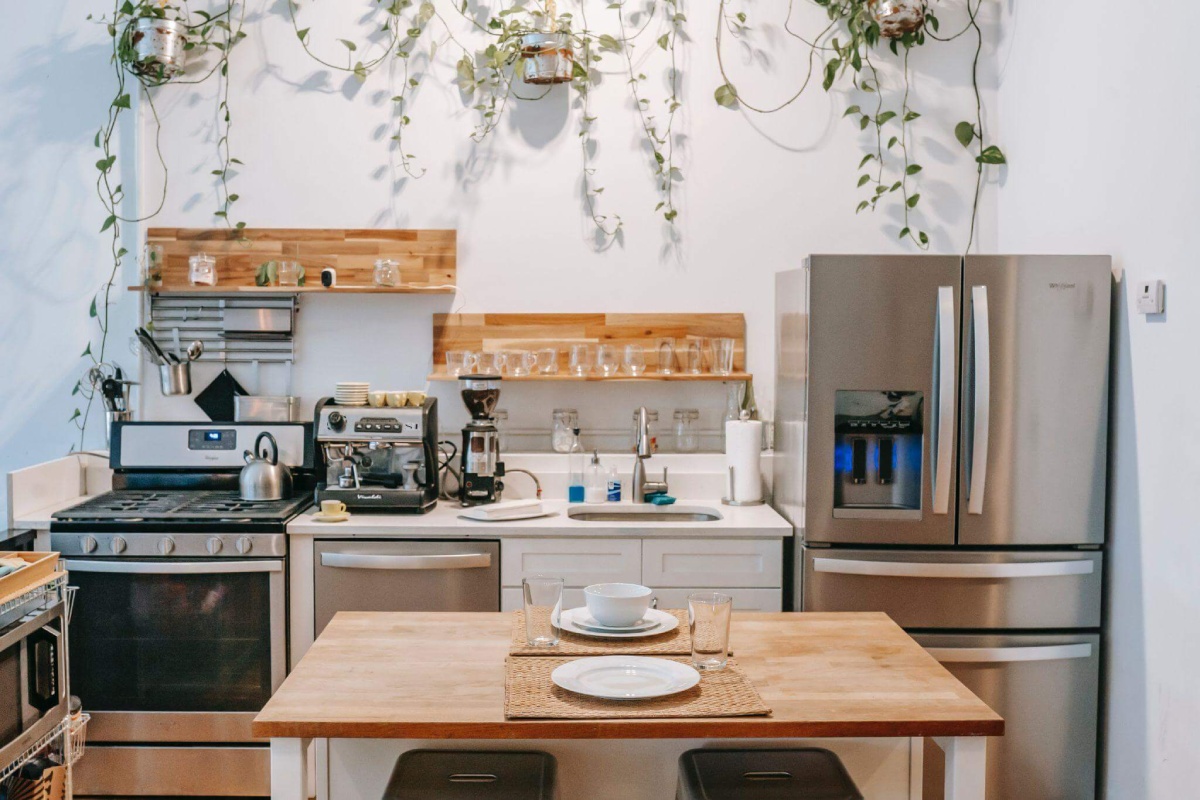
These appliances use less energy than standard appliances and can help reduce your electricity bill as well as your e-waste output.
By investing in more efficient products, you’ll be able to save money while helping protect the environment at the same time.
When looking for new electronics, always look for the Energy Star label. This will help you ensure you’re buying products designed to be as efficient as possible.
The following are some factors you need to know when buying electronics with a Star rating:
- What is the wattage of the device?
- What type of power management features does it have?
- What kind of cooling system does it use?
- What type of insulation does it have?
- What kind of energy-saving features are available?
Efficiency ratings are often in the product’s label or in the user manual. Always do your research before making a purchase to ensure that you’re getting the most efficient product for your needs.
Know Your State’s Laws About Battery Disposal
Many states have laws about battery disposal. It’s essential to know your State’s regulations when it comes to disposing of any type of batteries and solid waste, including cell phone and laptop batteries.
In some states, throwing a battery away in the trash or putting it in a recycling bin is illegal. Individuals and businesses should always take batteries to a proper disposal center or return to the manufacturer for appropriate disposal.
Improper disposal of batteries can have devastating environmental consequences, so make sure that you are following all local laws regarding battery disposal.
Batteries contain toxic materials such as lead and mercury, so it’s important to handle them properly.
Contact your local environmental agency to understand your State’s laws about e-waste disposal, including battery disposal. They will be able to provide you with more information and advice on the best way to dispose of e-waste.
It’s also important to check with manufacturers before disposing of any electronics, as they may have guidelines about safely discarding them.
Check E-recycling Centers in Your State
When it comes to reducing e-waste, recycling is essential. To ensure that you’re properly disposing of electronics, look for recycling centers in your State.

These centers specialize in the safe and responsible disposal of electronic waste. They also often offer collection services and can provide educational materials on reducing your e-waste output.
Recycling centers are a great way to dispose of unwanted electronics without harming the environment. What’s more, they help you recycle responsibly and safely.
If you don’t have access to an e-cycling center near you, many retailers have recycling programs where you can drop off your e-waste. This is a great way to ensure that your old electronics don’t end up in landfills or pollute the environment.
However, before you dispose of e-waste at recycling centers, there are a few questions you need to ask the recyclers, including:
- What materials do they accept?
- What is their recycling policy?
- What recycling method do they use (e.g., shredding, smelting)?
- What safety measures are in place for workers handling toxic materials?
- Do they extract valuable components from the waste electronics?
- Do they use certified e-waste recyclers?
E-Waste Recycling with CheckSammy
At CheckSammy, we offer sustainable e-waste recycling services on a one-time or recurring basis. We offer tailor-made programs to fit our customers’ needs, large and small. The process is simple: you schedule an e-waste pickup, a CheckSammy hauler comes by to pick up your waste, and we haul it away to a recycling facility where we sort, recycle, and divert the e-waste products. We accept the following items for e-waste recycling (and more):
- Computer monitors and computer components
- Smartphones
- Televisions
- Video game systems
- Printers
- Scanners
- Cables
- Circuit boards
- DVD/Blu-Ray players
- Radios
- Microwaves
- Dryers
- Washing machines
E-waste recycling is an important issue that affects not only our environment but also our health and economy. By properly recycling toxic e-waste with CheckSammy, you can help conserve valuable natural resources, prevent pollution, create jobs, and stimulate the economy. If you’re ready to get rid of old electronic devices, contact us today to see how we can help.
Get On Top of the Recycling Game with CheckSammy
CheckSammy is the world’s largest electronic junk recycler and sustainability operator. They recycle everything from computers and laptops to batteries, cell phones, printers, and more.

CheckSammy works with businesses of all sizes to help them achieve their sustainability goals.
What’s great about using CheckSammy is that they provide a full-service solution for e-waste management. They offer collection services, safe recycling methods, and the extraction of valuable components from e-waste.
What’s more, their certified recyclers follow all State and national regulations for the responsible disposal of electronics.
CheckSammy also provides customers with access to up-to-date insights on local laws regarding battery disposal and other e-waste management issues. This makes it easy for you to stay informed about how to properly handle your electronics before disposing of them.
Most importantly, with its technological solutions, CheckSammy makes a real difference in reducing e-waste.
By offering real insights into how to recycle and dispose of your electronic waste, we make it easier than ever to be an environmentally responsible consumer.
By using CheckSammy, you can take control of your e-waste management and do your part to reduce the amount of electronic waste going into landfills.
Whether you are a business owner, a non-profit organization, or a consumer, CheckSammy can help you take control of your e-waste management and safely dispose of your electronics.
E-waste is a growing issue in our world today, but by taking the proper steps, we can all do our part to reduce waste and raise recycling rates.
Contact CheckSammy Today to Learn More about E-Waste Management Solutions!
See Our Services
Create a custom solution to meet your waste and sustainability goals. Contact us today!
Continue reading
Dive deeper into the CheckSammy Blog by reading one of our posts below
Feeling the Pain of Higher Resident Turnover? Apartment Junk Removal Can Help
If you’re a property manager, you’ve probably had a significant increase in tenant turnover over the last couple of years. So it’s no wonder apartment junk removal may be top of mind for you right now. There are several reasons for this shift. For one, the housing market is on fire right now. In 2020 […]
Read MoreSetting Up a Community E-waste Recycling Program
E-waste is the fastest-growing municipal waste stream according to the EPA, yet e-waste recycling isn’t keeping pace. In fact, only 12.5% of all e-waste is recycled, reports the EPA. Starting a community e-waste recycling program is a terrific way to ensure hazardous e-waste, like lithium-ion batteries, doesn’t end up in your community’s landfill. Creating an […]
Read MoreWaste Management’s Role in the Circular Economy
Establishing a waste management program for your business or community is one of the best ways you can contribute to the circular economy. Here’s everything you need to know about waste management’s role in the circular economy (and how to get involved). What Is the Circular Economy? Our current economic model is all about taking […]
Read More5 Reasons to Consider a Textile Recycling Program for Your Organization
Americans sent more than 17 million tons of textiles to landfills in 2018, a volume that is only increasing every year, reports the Environmental Protection Agency. When you think about the fact that it can take over 200 years for textiles to decompose, it’s easy to grasp how large textile waste’s contribution is to the […]
Read More8 Benefits of Environmentally Friendly Power Washing Services
If you’re into maintaining the curb appeal of your business or home, then you’ve probably heard of pressure washing. Pressure cleaning involves using high-pressure water spray to remove grime, mold, dust, paint, mud, and other junk from objects or surfaces. Many people worry that pressure washing isn’t good for the environment, but this couldn’t be […]
Read MoreWhy Our Customers Love Our Full-Service Junk Removal
If you’re looking for full-service junk removal services, you’ve come to the right place. CheckSammy is a one-stop shop for all your junk removal and sustainability needs. From our affordability, simplicity, and unrivaled turnaround times to our innovative sustainability solutions and patented technology and data, it’s clear why some of North America’s biggest companies choose […]
Read MoreTips for a Stress-Free Move From An Eco-Friendly Junk Removal Company
What does an eco-friendly junk removal company know about moving? Quite a lot, actually. Moving can be an especially chaotic time. You have to pack everything up, get rid of unwanted items, clean your property, load everything up, and move your things to your new location. That doesn’t even include the unpacking and resettling period. […]
Read MoreCollege Junk Removal Tips for Student Move-In Day
As the new school year gears up, colleges across the country are looking for ways to clean up their campuses before the new year begins, and many of them want to do so sustainably. College junk removal isn’t easy, though, especially around move-in week—and when trying to do so sustainably. As students move in and […]
Read More8 Items Hospitality Businesses May Not Know They Can Recycle
One hotel guest produces 2.5 pounds of trash every single day. Just a single hotel room produces around one cubic yard of waste each month, which totals 200 gallons of waste per room every month. Most of this waste goes straight to the landfill, even though research shows that up to 60% of it is […]
Read More